You are using an out of date browser. It may not display this or other websites correctly.
You should upgrade or use an alternative browser.
You should upgrade or use an alternative browser.
TFZ Live 3
- Added by 536129
- Create date
cqtek
1000+ Head-Fier
Pros: As always at TFZ, a low-end reference zone.
- It's the most "balanced" model of the Live series.
- Present and homogeneous vocals.
- Balance between midrange and treble.
- Very natural, descriptive and detailed high end, with a control that does not mask the brightness.
- Good cable.
- It's the most "balanced" model of the Live series.
- Present and homogeneous vocals.
- Balance between midrange and treble.
- Very natural, descriptive and detailed high end, with a control that does not mask the brightness.
- Good cable.
Cons: No storage box/bag.
- Sound tends to be soft but lacks a richer texture.
- Sound tends to be soft but lacks a richer texture.
Introduction
Between Live 1 and Live X, TFZ has an intermediate model, the Live 3, whose aesthetic resemblance is very similar to version 1. For this occasion, the third-generation dynamic driver has been installed, with dual magnetic circuit, dual cavity and nano-level diaphragm with diamond pattern. Of course, its Tesla magnet, a unit that received Japan's VGP 2020 award, remains at the heart of the IEMS.
This time, the outer face follows marble patterns, with a choice of 5 models: white, red, yellow, blue and black. The packaging is very similar to model 1, but the cable has been improved: it has four independent strands, with silver-plated wires.
In terms of tuning, the Live 3 is the most balanced of the three models, adopting, of course, a powerful bass base, though less physical than that of the X model; while its upper-mid range is more balanced and controlled, but without losing clarity or presence in this range.
We'll go into more detail about this model, priced at around $70, below.


Disclaimer
Penon Audio Store, offered me this model, in exchange for writing an honest review. I want to make it clear that all my opinions written in this review have not been conditioned by this fact, nor will I ever write anything that I do not really think or feel here. I will only write about my personal opinion in relation to the revised product.
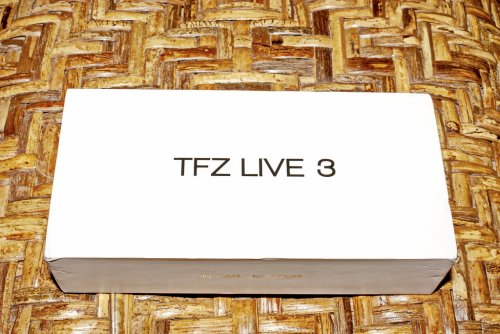

Specifications
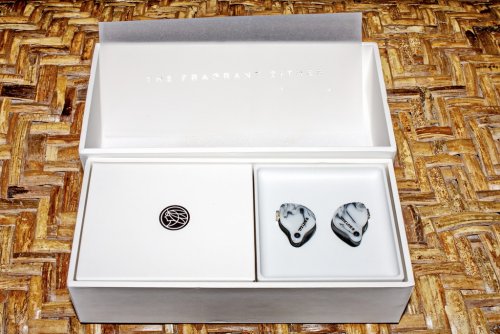

Packaging
Like its model 1, the TFZ Live 3 comes in an eminently white box, measuring 167x82x45mm. On the upper side, you can only read the name of the model, inscribed in silver capital letters. On the narrower side faces, the brand logo is drawn in the same type of silver ink. Meanwhile, on the longer side faces, "IN EAR MONITOR" is written. On the lower side, there is information about the brand, pictures of the 5 different capsules that can be chosen and the indication of the current model. There is also a holographic label, certifying the authenticity of the product, by means of a unique serial number, under a protective surface, which is removed after scratching. Finally, there is an EAN13 barcode and the legend "Made In China".
The inside is still completely white and consists of two sections: on the left the cardboard box, on the right the rigid plastic mould in which the capsules are encased. On this occasion, the brand logo inscribed on the box is black and filled in. The cable is located inside the mould of the capsules, rolled up with a strip of Velcro. Inside the white box (sealed at both openings), there are two pairs of blister packs, containing the silicone tips, the user manual and a clothes peg. In summary, the complete contents are:
The packaging is the same again, same size, same contents, outwardly the same. But there is still a missing accessory for storing the IEMS. On this occasion, being a slightly more expensive product, at least a pouch for the protection of the capsules could have been included.
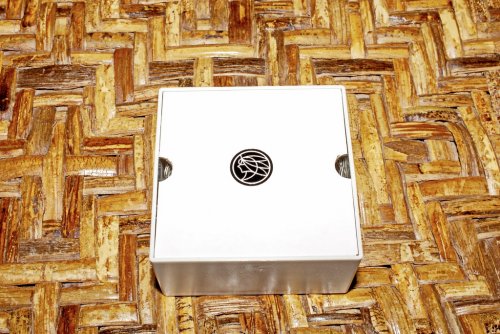
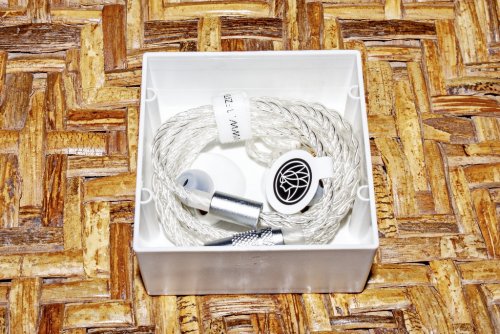
Construction and Design
The capsule shape of the Live 3 is the same as the Live 1 model. This time the outer face follows a marble pattern, which can be chosen in 5 different colours:
Meanwhile, the body of the capsule is completely black on all models, instead of being transparent as on the Live 1. The existing dot at the apex of the outer face remains, but this time it is made of black plastic. On the left side, "TFZ LIVE 3" is written in gold lettering. On this same face, near the connector, there are three small holes forming a triangle. The material is still polycarbonate. The mounting of the two-pin connection, which is shallow, is located on the upper edge of the capsule and consists of a transparent rectangular plate, which has two holes, the connections of which are gold-plated. On the edge next to the plate, the words 'TFZ-IEM COLLECTION' are inscribed, while on the inner side, the letter identifying the channel can be seen. All the inscriptions are in faint light-grey ink. In the centre of the inner side, next to the lettering of the carcass, there is another hole. The mouthpieces are fully integrated into the capsule, being made of the same material, with no division visible. They are almost 4 mm long. The first, lower part has a diameter of 5.6 mm. Then, there is a small flared crown, whose diameter is 6.2mm. Finally, the diameter of the outermost rim is again 5.6mm. Its interior is protected by a perforated metal grid.
For this occasion the cable is different, it is a cable of 4 strands protected by transparent plastic, wound together. The wires are silver plated. The connector jacket is straight, made of a light grey metal. It is almost the same as the Live 1, but the rough pattern is thicker and more noticeable. The plug is gold-plated. The divider is plastic, cylindrical, covered with a light grey metal plate. There is no adjustment piece under the chin. The cable has a Velcro strap to collect it. With the cable coiled, the microphony is non-existent, although the over-ear guides also help to avoid this effect.
The level of construction is maintained, as it is the same, and a more subtle and elegant touch is added, with a choice of marble patterns for the outer face. I still think that the base of the mouthpieces could have a larger diameter to prevent the wide-canal tips from sinking in when inserted in the ears.
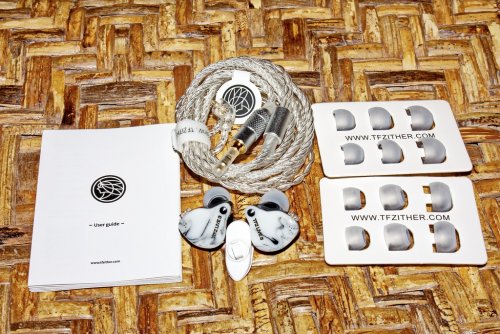
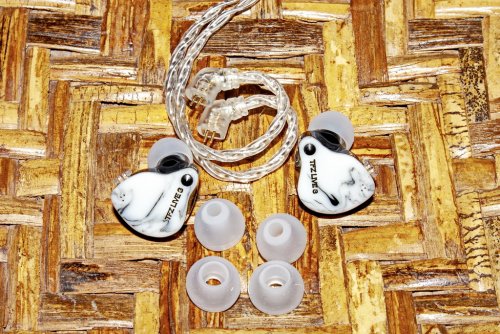
Adjustment and Ergonomics
The size and classic appearance of the capsules, with a semi-custom external shape, with a very rounded interior and no edges or corners, provides a superficial fit, quite free of contact with the external parts of the ear. And, if it does exist, the friction is very soft, due to the smoothness of the material used. This means that, as the hours go by, it does not affect the perception of comfort provided by this model. In this way, the ergonomics, widely contrasted in other models of the brand, is high and quite good. Once fitted, there is hardly any possibility of rotation and, with the right tips, there is no risk of the IEMS becoming detached or falling out.
The size of the capsules is not very large, although they are a bit fat. Their weight is negligible and hardly noticeable in the ears.
With my silicone tips, filled with foam, although the fit is quite shallow, the seal is very adequate and the level of insulation is high.
Same shape, same level of fit and ergonomics. If the design works, why change it?
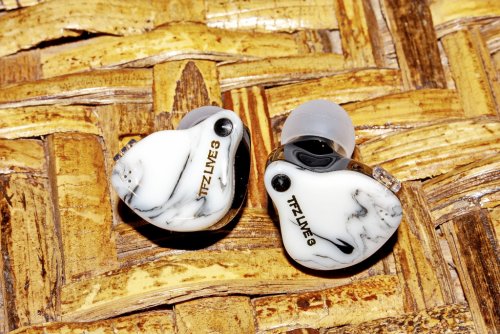

Sound
Profile
The TFZ Live 3 still have a W-profile, but this time, the ratio between the peaks is more balanced than in the other Live models. In fact, you could say that the profile is similar to the Live X, but with less energy, more mellow, homogeneous and balanced, especially in the upper-mids. As a consequence, the sound is very pleasant and smoother.


Bass
The low end of the TFZ Live 3 is characterised by a high sub-bass level, slightly coloured, with a gentle descent towards the mid-bass. These properties give it a dense and full body, but without any prominent bloating in the mid-bass. Despite its high energy level, the lower range does not feel as physical to our ears, although its power is quite large. The bass follows the TFZ pattern: plenty of power and smooth texture. This time, though, the roughness is replaced by a more raw sound, a little less refined than in other models, a little rougher, a particularity that detracts a bit of definition and a point of cleanliness in its execution. However, the separation of planes and the different bass lines are executed with authority, good lamination and separation, being easy to discern between them. In any case, the characteristic TFZ power continues to overwhelm, occupying more space than necessary to respect the rest of the ranges, leaning out a little more than it should, to the balcony of the middle zone. This intrusion is slightly noticeable, both laterally and aurally, as the sound of the bass range spreads out very well on all three axes. In this way, the bass does not cover the lower part of the midrange, but surrounds and accompanies it, because there is enough air and separation to provide sufficient space for the necessary coexistence.
The hitting speed is remarkable, the impact is dry, not very descriptive, without much distance and with a good decay. The timbre is natural and realistic, even if the sub-bass is a little coloured.
When the bass to be reproduced is of good quality, the Live 3s show off their good control and recovery, scaling up the better the quality of the source and the music being reproduced. This is when TFZ's award-winning, third-generation dynamic driver expresses its full potential and proves its worth, executing the bass with remarkable precision, harmony, mastery, power and authority.


Mids
The density of the low end allows the lower half of the midrange to have a very full body, which enhances vocals and keeps them from typically sinking. The Live 3 has a more balanced profile, which helps the presence of the midrange to be higher, despite the normal bass dispersion due to its power. This time, the mids are perceived as slightly warmer, with a more controlled and balanced upper half, which places the tonality in a position of neutral tendency, with a hint of warmth. If the energy of the low end doesn't bother, the Live 3s are very pleasant midrange IEMS, without that forced upper brightness, whose sound allows for long and pleasant hours of listening.
Something that is repeated in this model, is the simplicity in the presentation of the voices, which are still smooth, very well drawn, but without edges or too many nuances in their edges. There is a closer presence, which allows them to be viewed more broadly, making it easier to detect details, but without the texture being too evident. This is how voices gain in complexity, but still at a moderate level. On the other hand, there is hardly any difference in the treatment of female or male voices, which gives an idea of an improvement in the balance of the mid-range.
However, I find a favourable treatment of the vocals, with reference to the instrumentation, sounding slightly more distant and with less liveliness, but without losing the ability to extract details, nor the good timbre enjoyed by the Live 3. Thus there is a loss of exuberance, except in percussion and bass, in the contemplation of the full central range. Despite all this, the good balance means that the relationship between the other ranges does not feel polarised or too disadvantaged, making the Live 3 an IEMS for bass lovers who do not want to give up the midrange, but rather enjoy it openly.
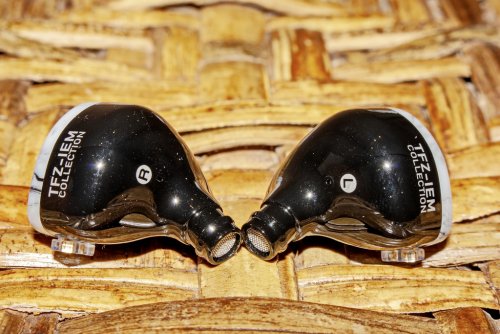

Treble
The treble tuning of the Live 3 is totally to my liking. They are balanced and not too bright, their timbre is very natural and they are never shrill. Best of all, their expressiveness is very eloquent and never feels impaired, because the emphasis in this area is always under control. In this way, the treble is clearly noticeable, but without being perceived as too sharp or fatiguing. This is how details come through easily and any hint of sibilance is avoided, helping the other frequencies to reproduce their harmonics as fully and evenly as possible. In this sense, the characteristics of this range remind me more of the Live X than the Live 1. It is true that they do not enjoy the level of refinement and definition of their big brothers, but they do share a very similar tuning, which allows them to enjoy many of their benefits. In this way the execution of the high notes is quite precise, shimmering when necessary, but ending at just the right point that makes them enjoyable, rather than unpleasant, but without losing their grace and sparkle.
The extension is good and there is a sufficient amount of air so that the cleanness of the sound is never lost and there is no congestion in the rest of the range.


Soundstage, Separation
The sound of the Live 3 is energetic, clean, natural and transparent. Its soundstage is a reflection of these qualities and has a good level of roundness, where width and depth are perceived on a par, offering a semi-oval and frontal image, as the height axis is not so pronounced. The voices have a tendency to be placed in the centre, without being completely close, but keeping a small distance that provides laterality and movement, gaining a space with freedom to move around the scene. The instrumentation is placed in the background, but the details help it to acquire more notoriety and presence, without detracting from its musical essentiality.
The softness of the sound and its continuity limits its analytical capacity and, despite the good level of transparency of the sound, the background is not fully obscured, due to the cohesion and ambient density. There is space, distinguishable separation and no congestion, but the silence that a deep, dark background provides is not perceived. However, the dynamic range does not suffer in this respect, remaining quite high.
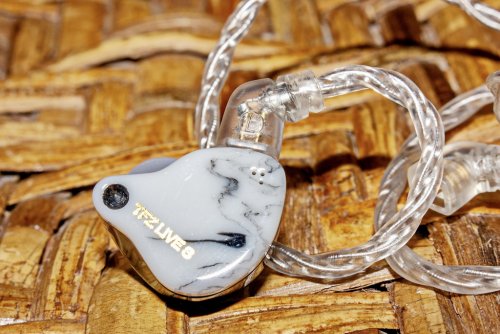
Comparisons
TFZ Live 1
I find it very necessary that the first comparison is with its little brother, the Live 1. At first glance the design of both is based on a very similar capsule, decorated differently. The Live 1 has the cable of the No.3 and the Live 3 comes with a new, in my opinion superior and more comfortable cable. Otherwise, everything is very similar, even the packaging is almost the same.
In terms of sound, the first difference is the volume, with the Live 3 being more sensitive. The second clear difference is their greater homogeneity: the sound is fuller in the bass and mid-range. Only in the upper midrange and treble do the Live 1's outperform the Live 3's in terms of presence. Thus the Live 1 has a tendency to sound thinner and more delicate than the Live 3, where everything is thicker, denser, more present and closer. The low end of the Live 1's is cleaner and leaner towards the sub-bass, lacking in mid-bass and low-mids. It is this situation that contributes to the thinness of the sound and a greater distance from the midrange. Although vocals feel more distant, they seem less contaminated by the bass, but lack the body and power of the Live 3. True, the latter's midrange lives closer to the bass, but its greater warmth brings more soul and emotion, as well as a more natural timbre and fuller tonality. The Live 1's are cooler, with brighter, perhaps clearer and more finely nuanced voices, but the Live 3's density and texture make for a richer, more complex performance.
In the low end, the Live 1's have a cleaner, sub-bass dominated low end, being smoother and slightly less energetic. There is a more predominant power in the Live 3, its greater extension into the mid-bass widens it and gives it thickness, greater texture, presence and punch. In this way the low end is more predominant in its sound, while the Live 1's offer a more U-shaped profile, something that is noticeable in the clear presence of its treble, whose presence is more predominant and perceptible.
The presentation of the soundstage is different in both IEMS. The Live 1's show a more concave soundstage, like their profile, while the Live 3's are more oval. With some music, the Live 1, due to its lower density, greater clarity and cleanliness, can give the impression of a wider and larger soundstage, with more perceptible separation and better three-dimensionality. But at other times, this feeling is evened out, although the Live 3s offer a lesser sense of depth, due to the closer proximity of the sound they offer, as well as their greater density and homogeneity.
There is very little doubt if one has to choose between the two: if one is looking for a sound with cleaner mids, energetic sub-bass and present but controlled treble, with a more blatant level of detail, a more perceptible scene, one should choose the Live 1. If, on the other hand, one prefers a fuller, more complex sound, with more body, density, wider and more present mids, with a natural but warmer timbre, where the treble is balanced but clearly perceptible, one should choose the Live 3 and enjoy their energetic sound.
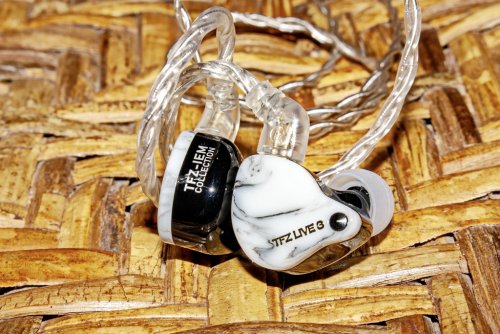
NS Audio NS3 Bass Enhanced Version
The NS3s are still on my list of favourite IEMS in the $50 to $80 range.
The Live 3s move much more easily than the NS3s, which need more power to be at the same volume level. Both share a fairly similar timbre, with a very natural tendency, where the NS3s bring more clarity, presence in vocals and a slightly brighter tendency. The Live 3s, on the other hand, have a warmer, slightly softer, but never dark profile. In the midrange it is difficult for the Live 3s to dispute the power of the NS3s, as their greater closeness, expressiveness and descriptive level is moderately superior. The lower mid-range of the Live 3 has more body and fullness, which makes the representation, especially of the male voices, thicker, wider and more powerful. The warm tuning of the NS3s, on the other hand, has a tendency to be less dense, thinner and somewhat brighter. Voices are thus represented differently, with the Live 3 being more confident against sibilance and the NS3 more effective at revealing detail and nuance, as well as reproducing textures in a slightly richer way, but without the fullness and energy of the TFZs. It is also worth noting that the NS3s do not intrude on bass, something that can be observed in the Live 3s.
In the low end the differences are great in their power level. Both are tuned towards the sub-bass, but the TFZ raises the level of presence significantly above that of the NS3s. The lower range of the NS3s, in their Bass Enhanced version, should be more than enough for most enthusiasts, even too much. But this is not a BassHead level. The Live 3s do reach this level, demonstrating an authority and power that will make bass lovers smile. The timbre is similar in both, with a slightly more visible texture in the NS3s, despite their smoother reproduction; they also have slightly more speed and decay. But body, thickness, physicality, punch and depth fall on the side of the TFZs.
Going into the high end, the Live 3's tuning seems more natural, basically because the NS3's feel more trimmed, giving the sensation that their tuning in this range has been polished before its time, detracting from expressiveness and presence. That makes details feel minimised in the NS3s, while in the Live 3s they flow with greater freedom, extension and air.
The greater sense of cleanness in the sound, as well as the clarity offered by the high mids of the NS3s, provide a wider, more expansive soundstage. The closeness of the vocals does not detract from their three-dimensionality, but rather they feel more fluid and ethereal. In the Live 3, the higher energy of the bass, the density of the sound and its homogeneity limit the stage and the separation, comparatively speaking. In this sense, the more airy feel of the TFZs fails to counterbalance the compactness of their lower range. Thus, the stage of the NS3s is more panoramic and louder, also slightly more enveloping. There is also a more perceptible sense of dark background in the Nature Sound.

Conclusion
Live 3 is one of the members of the Live trilogy. Each one has a different profile, while maintaining the coherence of its sound. On this occasion, it is the most balanced of the three models and is characterised by the musicality of the ensemble, its natural timbre and the homogeneity of the mids and highs. The bass is more extended and wider, extending its power beyond the sub-bass. This is how the mids acquire a denser, warmer, thicker and more powerful body, drawing very full and closer voices. The highs follow the homogeneity of the sound and are expressed with a very natural intonation, a very realistic brightness that is not clipped, but never overdone; a great job. This is how the Live 3s become an all-rounder IEMS, allowing bass lovers to enjoy the mids and highs without giving up their fantastic low end. But not only its low end is remarkable, but the other ranges are capable of rivalling and surpassing the rest of the IEMS in the same class, even in those whose bass are more balanced. Quite an achievement.
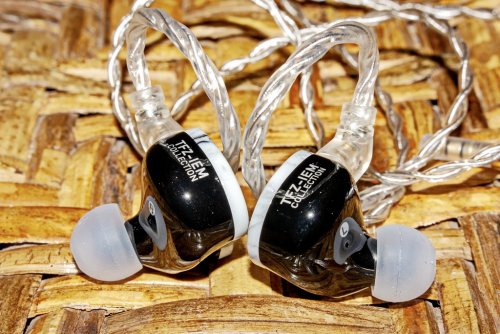
Sources Used During the Analysis
Ratings
Purchase Link
https://penonaudio.com/tfz-live-3.html
You can read the full review in Spanish here
https://hiendportable.com/2021/02/07/tfz-live-3-review/
Between Live 1 and Live X, TFZ has an intermediate model, the Live 3, whose aesthetic resemblance is very similar to version 1. For this occasion, the third-generation dynamic driver has been installed, with dual magnetic circuit, dual cavity and nano-level diaphragm with diamond pattern. Of course, its Tesla magnet, a unit that received Japan's VGP 2020 award, remains at the heart of the IEMS.
This time, the outer face follows marble patterns, with a choice of 5 models: white, red, yellow, blue and black. The packaging is very similar to model 1, but the cable has been improved: it has four independent strands, with silver-plated wires.
In terms of tuning, the Live 3 is the most balanced of the three models, adopting, of course, a powerful bass base, though less physical than that of the X model; while its upper-mid range is more balanced and controlled, but without losing clarity or presence in this range.
We'll go into more detail about this model, priced at around $70, below.


Disclaimer
Penon Audio Store, offered me this model, in exchange for writing an honest review. I want to make it clear that all my opinions written in this review have not been conditioned by this fact, nor will I ever write anything that I do not really think or feel here. I will only write about my personal opinion in relation to the revised product.


Specifications
- Driver Type: Third generation 11.4mm dynamic driver with double magnetic circuit. Graphene unit with two-way crossover.
- Magnetic flux: 1 Tesla.
- Frequency Response: 5Hz-40Hz
- Sensitivity: 108dB/mW
- Impedance: 20Ω
- Minimum power: 8mW
- Jack Connector: 3.5mm
- Capsule Connection Type: 2 pin 0.78mm
- Cable length: 1.2mm


Packaging
Like its model 1, the TFZ Live 3 comes in an eminently white box, measuring 167x82x45mm. On the upper side, you can only read the name of the model, inscribed in silver capital letters. On the narrower side faces, the brand logo is drawn in the same type of silver ink. Meanwhile, on the longer side faces, "IN EAR MONITOR" is written. On the lower side, there is information about the brand, pictures of the 5 different capsules that can be chosen and the indication of the current model. There is also a holographic label, certifying the authenticity of the product, by means of a unique serial number, under a protective surface, which is removed after scratching. Finally, there is an EAN13 barcode and the legend "Made In China".
The inside is still completely white and consists of two sections: on the left the cardboard box, on the right the rigid plastic mould in which the capsules are encased. On this occasion, the brand logo inscribed on the box is black and filled in. The cable is located inside the mould of the capsules, rolled up with a strip of Velcro. Inside the white box (sealed at both openings), there are two pairs of blister packs, containing the silicone tips, the user manual and a clothes peg. In summary, the complete contents are:
- The two capsules, each with a white silicone tip, medium size and narrow channel.
- One cable with 3.5mm gold-plated plug, 0.78mm connectors and a velcro strap for storage.
- A blister with three pairs of white silicone tips, semi-translucent, sizes SxMxL and narrow channel.
- A blister with three pairs of white, semi-translucent silicone tips, sizes SxMxL and wide canal.
- One instruction manual, in Chinese and English.
- One clothes pin.
The packaging is the same again, same size, same contents, outwardly the same. But there is still a missing accessory for storing the IEMS. On this occasion, being a slightly more expensive product, at least a pouch for the protection of the capsules could have been included.


Construction and Design
The capsule shape of the Live 3 is the same as the Live 1 model. This time the outer face follows a marble pattern, which can be chosen in 5 different colours:
- Neutral White, Allure Red, Trendy Yellow, Dream Blue, Elegant Black.
Meanwhile, the body of the capsule is completely black on all models, instead of being transparent as on the Live 1. The existing dot at the apex of the outer face remains, but this time it is made of black plastic. On the left side, "TFZ LIVE 3" is written in gold lettering. On this same face, near the connector, there are three small holes forming a triangle. The material is still polycarbonate. The mounting of the two-pin connection, which is shallow, is located on the upper edge of the capsule and consists of a transparent rectangular plate, which has two holes, the connections of which are gold-plated. On the edge next to the plate, the words 'TFZ-IEM COLLECTION' are inscribed, while on the inner side, the letter identifying the channel can be seen. All the inscriptions are in faint light-grey ink. In the centre of the inner side, next to the lettering of the carcass, there is another hole. The mouthpieces are fully integrated into the capsule, being made of the same material, with no division visible. They are almost 4 mm long. The first, lower part has a diameter of 5.6 mm. Then, there is a small flared crown, whose diameter is 6.2mm. Finally, the diameter of the outermost rim is again 5.6mm. Its interior is protected by a perforated metal grid.
For this occasion the cable is different, it is a cable of 4 strands protected by transparent plastic, wound together. The wires are silver plated. The connector jacket is straight, made of a light grey metal. It is almost the same as the Live 1, but the rough pattern is thicker and more noticeable. The plug is gold-plated. The divider is plastic, cylindrical, covered with a light grey metal plate. There is no adjustment piece under the chin. The cable has a Velcro strap to collect it. With the cable coiled, the microphony is non-existent, although the over-ear guides also help to avoid this effect.
The level of construction is maintained, as it is the same, and a more subtle and elegant touch is added, with a choice of marble patterns for the outer face. I still think that the base of the mouthpieces could have a larger diameter to prevent the wide-canal tips from sinking in when inserted in the ears.


Adjustment and Ergonomics
The size and classic appearance of the capsules, with a semi-custom external shape, with a very rounded interior and no edges or corners, provides a superficial fit, quite free of contact with the external parts of the ear. And, if it does exist, the friction is very soft, due to the smoothness of the material used. This means that, as the hours go by, it does not affect the perception of comfort provided by this model. In this way, the ergonomics, widely contrasted in other models of the brand, is high and quite good. Once fitted, there is hardly any possibility of rotation and, with the right tips, there is no risk of the IEMS becoming detached or falling out.
The size of the capsules is not very large, although they are a bit fat. Their weight is negligible and hardly noticeable in the ears.
With my silicone tips, filled with foam, although the fit is quite shallow, the seal is very adequate and the level of insulation is high.
Same shape, same level of fit and ergonomics. If the design works, why change it?


Sound
Profile
The TFZ Live 3 still have a W-profile, but this time, the ratio between the peaks is more balanced than in the other Live models. In fact, you could say that the profile is similar to the Live X, but with less energy, more mellow, homogeneous and balanced, especially in the upper-mids. As a consequence, the sound is very pleasant and smoother.


Bass
The low end of the TFZ Live 3 is characterised by a high sub-bass level, slightly coloured, with a gentle descent towards the mid-bass. These properties give it a dense and full body, but without any prominent bloating in the mid-bass. Despite its high energy level, the lower range does not feel as physical to our ears, although its power is quite large. The bass follows the TFZ pattern: plenty of power and smooth texture. This time, though, the roughness is replaced by a more raw sound, a little less refined than in other models, a little rougher, a particularity that detracts a bit of definition and a point of cleanliness in its execution. However, the separation of planes and the different bass lines are executed with authority, good lamination and separation, being easy to discern between them. In any case, the characteristic TFZ power continues to overwhelm, occupying more space than necessary to respect the rest of the ranges, leaning out a little more than it should, to the balcony of the middle zone. This intrusion is slightly noticeable, both laterally and aurally, as the sound of the bass range spreads out very well on all three axes. In this way, the bass does not cover the lower part of the midrange, but surrounds and accompanies it, because there is enough air and separation to provide sufficient space for the necessary coexistence.
The hitting speed is remarkable, the impact is dry, not very descriptive, without much distance and with a good decay. The timbre is natural and realistic, even if the sub-bass is a little coloured.
When the bass to be reproduced is of good quality, the Live 3s show off their good control and recovery, scaling up the better the quality of the source and the music being reproduced. This is when TFZ's award-winning, third-generation dynamic driver expresses its full potential and proves its worth, executing the bass with remarkable precision, harmony, mastery, power and authority.


Mids
The density of the low end allows the lower half of the midrange to have a very full body, which enhances vocals and keeps them from typically sinking. The Live 3 has a more balanced profile, which helps the presence of the midrange to be higher, despite the normal bass dispersion due to its power. This time, the mids are perceived as slightly warmer, with a more controlled and balanced upper half, which places the tonality in a position of neutral tendency, with a hint of warmth. If the energy of the low end doesn't bother, the Live 3s are very pleasant midrange IEMS, without that forced upper brightness, whose sound allows for long and pleasant hours of listening.
Something that is repeated in this model, is the simplicity in the presentation of the voices, which are still smooth, very well drawn, but without edges or too many nuances in their edges. There is a closer presence, which allows them to be viewed more broadly, making it easier to detect details, but without the texture being too evident. This is how voices gain in complexity, but still at a moderate level. On the other hand, there is hardly any difference in the treatment of female or male voices, which gives an idea of an improvement in the balance of the mid-range.
However, I find a favourable treatment of the vocals, with reference to the instrumentation, sounding slightly more distant and with less liveliness, but without losing the ability to extract details, nor the good timbre enjoyed by the Live 3. Thus there is a loss of exuberance, except in percussion and bass, in the contemplation of the full central range. Despite all this, the good balance means that the relationship between the other ranges does not feel polarised or too disadvantaged, making the Live 3 an IEMS for bass lovers who do not want to give up the midrange, but rather enjoy it openly.


Treble
The treble tuning of the Live 3 is totally to my liking. They are balanced and not too bright, their timbre is very natural and they are never shrill. Best of all, their expressiveness is very eloquent and never feels impaired, because the emphasis in this area is always under control. In this way, the treble is clearly noticeable, but without being perceived as too sharp or fatiguing. This is how details come through easily and any hint of sibilance is avoided, helping the other frequencies to reproduce their harmonics as fully and evenly as possible. In this sense, the characteristics of this range remind me more of the Live X than the Live 1. It is true that they do not enjoy the level of refinement and definition of their big brothers, but they do share a very similar tuning, which allows them to enjoy many of their benefits. In this way the execution of the high notes is quite precise, shimmering when necessary, but ending at just the right point that makes them enjoyable, rather than unpleasant, but without losing their grace and sparkle.
The extension is good and there is a sufficient amount of air so that the cleanness of the sound is never lost and there is no congestion in the rest of the range.


Soundstage, Separation
The sound of the Live 3 is energetic, clean, natural and transparent. Its soundstage is a reflection of these qualities and has a good level of roundness, where width and depth are perceived on a par, offering a semi-oval and frontal image, as the height axis is not so pronounced. The voices have a tendency to be placed in the centre, without being completely close, but keeping a small distance that provides laterality and movement, gaining a space with freedom to move around the scene. The instrumentation is placed in the background, but the details help it to acquire more notoriety and presence, without detracting from its musical essentiality.
The softness of the sound and its continuity limits its analytical capacity and, despite the good level of transparency of the sound, the background is not fully obscured, due to the cohesion and ambient density. There is space, distinguishable separation and no congestion, but the silence that a deep, dark background provides is not perceived. However, the dynamic range does not suffer in this respect, remaining quite high.

Comparisons
TFZ Live 1
I find it very necessary that the first comparison is with its little brother, the Live 1. At first glance the design of both is based on a very similar capsule, decorated differently. The Live 1 has the cable of the No.3 and the Live 3 comes with a new, in my opinion superior and more comfortable cable. Otherwise, everything is very similar, even the packaging is almost the same.
In terms of sound, the first difference is the volume, with the Live 3 being more sensitive. The second clear difference is their greater homogeneity: the sound is fuller in the bass and mid-range. Only in the upper midrange and treble do the Live 1's outperform the Live 3's in terms of presence. Thus the Live 1 has a tendency to sound thinner and more delicate than the Live 3, where everything is thicker, denser, more present and closer. The low end of the Live 1's is cleaner and leaner towards the sub-bass, lacking in mid-bass and low-mids. It is this situation that contributes to the thinness of the sound and a greater distance from the midrange. Although vocals feel more distant, they seem less contaminated by the bass, but lack the body and power of the Live 3. True, the latter's midrange lives closer to the bass, but its greater warmth brings more soul and emotion, as well as a more natural timbre and fuller tonality. The Live 1's are cooler, with brighter, perhaps clearer and more finely nuanced voices, but the Live 3's density and texture make for a richer, more complex performance.
In the low end, the Live 1's have a cleaner, sub-bass dominated low end, being smoother and slightly less energetic. There is a more predominant power in the Live 3, its greater extension into the mid-bass widens it and gives it thickness, greater texture, presence and punch. In this way the low end is more predominant in its sound, while the Live 1's offer a more U-shaped profile, something that is noticeable in the clear presence of its treble, whose presence is more predominant and perceptible.
The presentation of the soundstage is different in both IEMS. The Live 1's show a more concave soundstage, like their profile, while the Live 3's are more oval. With some music, the Live 1, due to its lower density, greater clarity and cleanliness, can give the impression of a wider and larger soundstage, with more perceptible separation and better three-dimensionality. But at other times, this feeling is evened out, although the Live 3s offer a lesser sense of depth, due to the closer proximity of the sound they offer, as well as their greater density and homogeneity.
There is very little doubt if one has to choose between the two: if one is looking for a sound with cleaner mids, energetic sub-bass and present but controlled treble, with a more blatant level of detail, a more perceptible scene, one should choose the Live 1. If, on the other hand, one prefers a fuller, more complex sound, with more body, density, wider and more present mids, with a natural but warmer timbre, where the treble is balanced but clearly perceptible, one should choose the Live 3 and enjoy their energetic sound.

NS Audio NS3 Bass Enhanced Version
The NS3s are still on my list of favourite IEMS in the $50 to $80 range.
The Live 3s move much more easily than the NS3s, which need more power to be at the same volume level. Both share a fairly similar timbre, with a very natural tendency, where the NS3s bring more clarity, presence in vocals and a slightly brighter tendency. The Live 3s, on the other hand, have a warmer, slightly softer, but never dark profile. In the midrange it is difficult for the Live 3s to dispute the power of the NS3s, as their greater closeness, expressiveness and descriptive level is moderately superior. The lower mid-range of the Live 3 has more body and fullness, which makes the representation, especially of the male voices, thicker, wider and more powerful. The warm tuning of the NS3s, on the other hand, has a tendency to be less dense, thinner and somewhat brighter. Voices are thus represented differently, with the Live 3 being more confident against sibilance and the NS3 more effective at revealing detail and nuance, as well as reproducing textures in a slightly richer way, but without the fullness and energy of the TFZs. It is also worth noting that the NS3s do not intrude on bass, something that can be observed in the Live 3s.
In the low end the differences are great in their power level. Both are tuned towards the sub-bass, but the TFZ raises the level of presence significantly above that of the NS3s. The lower range of the NS3s, in their Bass Enhanced version, should be more than enough for most enthusiasts, even too much. But this is not a BassHead level. The Live 3s do reach this level, demonstrating an authority and power that will make bass lovers smile. The timbre is similar in both, with a slightly more visible texture in the NS3s, despite their smoother reproduction; they also have slightly more speed and decay. But body, thickness, physicality, punch and depth fall on the side of the TFZs.
Going into the high end, the Live 3's tuning seems more natural, basically because the NS3's feel more trimmed, giving the sensation that their tuning in this range has been polished before its time, detracting from expressiveness and presence. That makes details feel minimised in the NS3s, while in the Live 3s they flow with greater freedom, extension and air.
The greater sense of cleanness in the sound, as well as the clarity offered by the high mids of the NS3s, provide a wider, more expansive soundstage. The closeness of the vocals does not detract from their three-dimensionality, but rather they feel more fluid and ethereal. In the Live 3, the higher energy of the bass, the density of the sound and its homogeneity limit the stage and the separation, comparatively speaking. In this sense, the more airy feel of the TFZs fails to counterbalance the compactness of their lower range. Thus, the stage of the NS3s is more panoramic and louder, also slightly more enveloping. There is also a more perceptible sense of dark background in the Nature Sound.

Conclusion
Live 3 is one of the members of the Live trilogy. Each one has a different profile, while maintaining the coherence of its sound. On this occasion, it is the most balanced of the three models and is characterised by the musicality of the ensemble, its natural timbre and the homogeneity of the mids and highs. The bass is more extended and wider, extending its power beyond the sub-bass. This is how the mids acquire a denser, warmer, thicker and more powerful body, drawing very full and closer voices. The highs follow the homogeneity of the sound and are expressed with a very natural intonation, a very realistic brightness that is not clipped, but never overdone; a great job. This is how the Live 3s become an all-rounder IEMS, allowing bass lovers to enjoy the mids and highs without giving up their fantastic low end. But not only its low end is remarkable, but the other ranges are capable of rivalling and surpassing the rest of the IEMS in the same class, even in those whose bass are more balanced. Quite an achievement.

Sources Used During the Analysis
- Burson Audio Playmate
- xDuoo XP-2Pro
- HyBy R3 Pro
- E1DA #9038D
- ACMEE MF-01
- S.M.S.L Sanskrit 10th MKII + iFi ZEN CAN
Ratings
- Construction and Design: 83
- Adjustment/Ergonomics: 80
- Accessories: 73
- Bass: 88
- Mids: 82
- Treble: 85
- Separation: 83
- Soundstage: 83
- Quality/Price: 86
Purchase Link
https://penonaudio.com/tfz-live-3.html
You can read the full review in Spanish here
https://hiendportable.com/2021/02/07/tfz-live-3-review/
Last edited:
L
LikeHolborn
which is purely more musical and cohesive, harmonious? ns3 tfz3. strictly attractive musicality which beats these two thats a dynamic driver?
cqtek
NS3 is better for me.
L
LikeHolborn
have you heard the nicehck topguy, sounds like that evoke in the low midrange. am looking more of a orivetti od200. but seeing the dunu sa3 and the topguy that dip at 3k, as opposed to the ns3 makes me wonder where those upfront vocals come from? if i could afford the new aür ascension i would just get that too, tsmr 3 tansio mirai too but not subdued in the treble. the review of the topguy makes it sound really compartmantlised and pure, treble only complimenting the midrange and neutral bass that does the same, only afraid its lacking in lowmidrange and vocals being forward..
.
.
536129
Head-Fier
Pros: Great build and cable, nice shell. Polite tuning with warm low end
Cons: Many other single dd are better for same or less cost imo
Rolled treble and medium detail
Rolled treble and medium detail
TFZ Live 3
Warm low end , good bass and sub bass rolled treble , polite tuning, mild energy, detail but shy of bright.
Good separation and placement, slight
Mid bass bleed
Neutral vocals
20ohm 108db efficiency sounds good off phone
Mild darkness
Good build and cable
Sounds very similar to jade audio ea1 but not quite as good.
More of a t2 plus it00 sound with warm low end with less detail
Don’t recommend as better options available for lower price ( ea1 is half the
Price)
I prefer blon 03/05/05s over this
Warm low end , good bass and sub bass rolled treble , polite tuning, mild energy, detail but shy of bright.
Good separation and placement, slight
Mid bass bleed
Neutral vocals
20ohm 108db efficiency sounds good off phone
Mild darkness
Good build and cable
Sounds very similar to jade audio ea1 but not quite as good.
More of a t2 plus it00 sound with warm low end with less detail
Don’t recommend as better options available for lower price ( ea1 is half the
Price)
I prefer blon 03/05/05s over this
Last edited:
traherntsui
Has to be combined with good source, too sensitive to electrostatic background. anyone also facing that problem?
L
LikeHolborn
i like it, which iems is the best version of this sound that you heard? i prefer musicality to extended detail.. 


